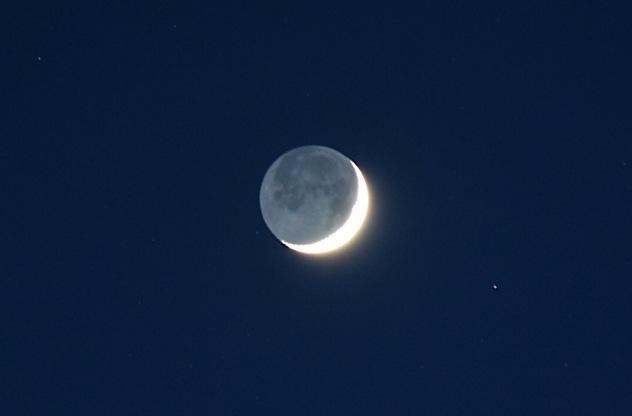Thursday night to bring best chance in 2021 to view the elusive planet.
“…will be a great time for stargazers of all ages to step outside after sunset to spot one of the most elusive planets in the night sky as it pairs up with Earth’s celestial companion.”
The following written content by Brian Lada
The middle of May will be a great time for stargazers of all ages to step outside after sunset to spot one of the most elusive planets in the night sky as it pairs up with Earth’s celestial companion.
Jupiter, Saturn, Mars, Venus and Mercury are the five planets in our solar system that are visible without the help of a telescope, but Mercury can be the most difficult of the bunch to spot.
The tiny planet is often lost in the bright light from the sun, but several times a year, it appears in the evening or early morning sky. Even then, it is typically very dim and can be hard to spot.
The middle of May will be the best time in all of 2021 to look for Mercury, according to EarthSky, particularly on Thursday, May 13, as the planet pairs up with the crescent moon after sunset.
The moon will serve as an easy-to-spot reference point with the dim Mercury appearing just below and to the right of it.
The celestial duo will be very low in the western sky, so people hoping to see Mercury may want to travel to a nearby location that has an unobstructed view of the horizon clear of trees or buildings.
| The moon will serve as an easy-to-find reference point to locate the dim planet Mercury on May 13, 2021. (AccuWeather) |
If cloudy conditions prevail on Thursday evening, skywatchers can look for Mercury each evening into next week, although the moon will appear farther and farther away each night making the planet a bit more difficult to find.
Saturday, May 15, will be another night to step outside and look to the western sky as the moon swings past Mars with the two appearing even closer than the moon and Mercury on May 13.
The weekend may also bring a great opportunity to see a lunar phenomenon known as ‘earthshine.’
Around the time that just a sliver of the moon is illuminated by the sun, onlookers may notice that the entire Earth-facing side of the moon is visible. Read more from MSN.





